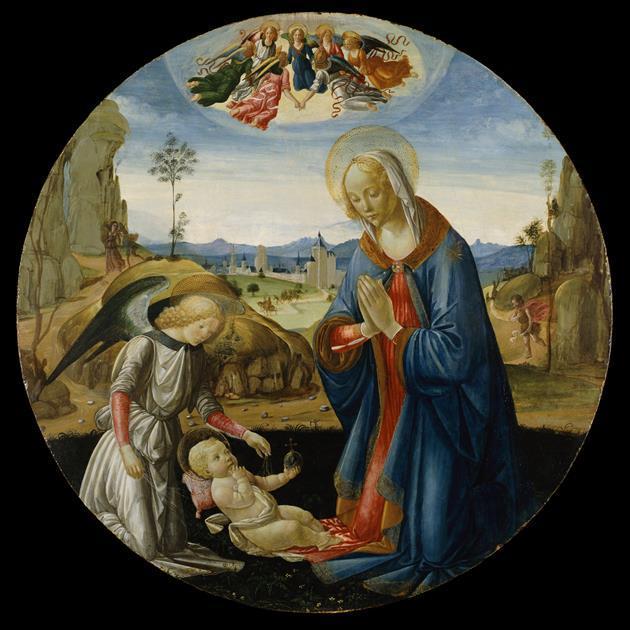Adoration of the Christ Child
ca. 1475
Coinciding with the Renaissance fascination with the circle, the tondo—or round image, derived from the Italian rotondo—became popular in Florence during the second half of the fifteenth century. Although most tondi were devotional objects, they generally adorned residences rather than churches. Installed above eye level, the tondo was like a window to a heavenly realm where viewers could observe the exemplary actions of beautifully painted holy figures. The oil medium, popularized in Italy in the second half of the fifteenth century, gave the images a new naturalism, with figures that seemed more lifelike than the upright figures in the traditional altarpiece format.
Oil on wood panel
Gift of Mr. Ivan L. Best in memory of Mrs. Best
53.86
Provenance: Colonel Rt. Hon. C.F. Greville, England, to 1810; Colonel Thomas Hamlet, England, 1810-1863; Colonel C. Smith, England, 1863-1876; Earl of Dudley, England, from 1876; Lord Viscount d'Abernon (died 1941), England, to 1929; Leopold Davis, from 1929; [Duveen Brothers, Inc., London, to 1953]; Ivan L. Best (died 1979), Portland, Oregon; gift to Seattle Art Museum, April 3, 1953
Photo: Paul Macapia

